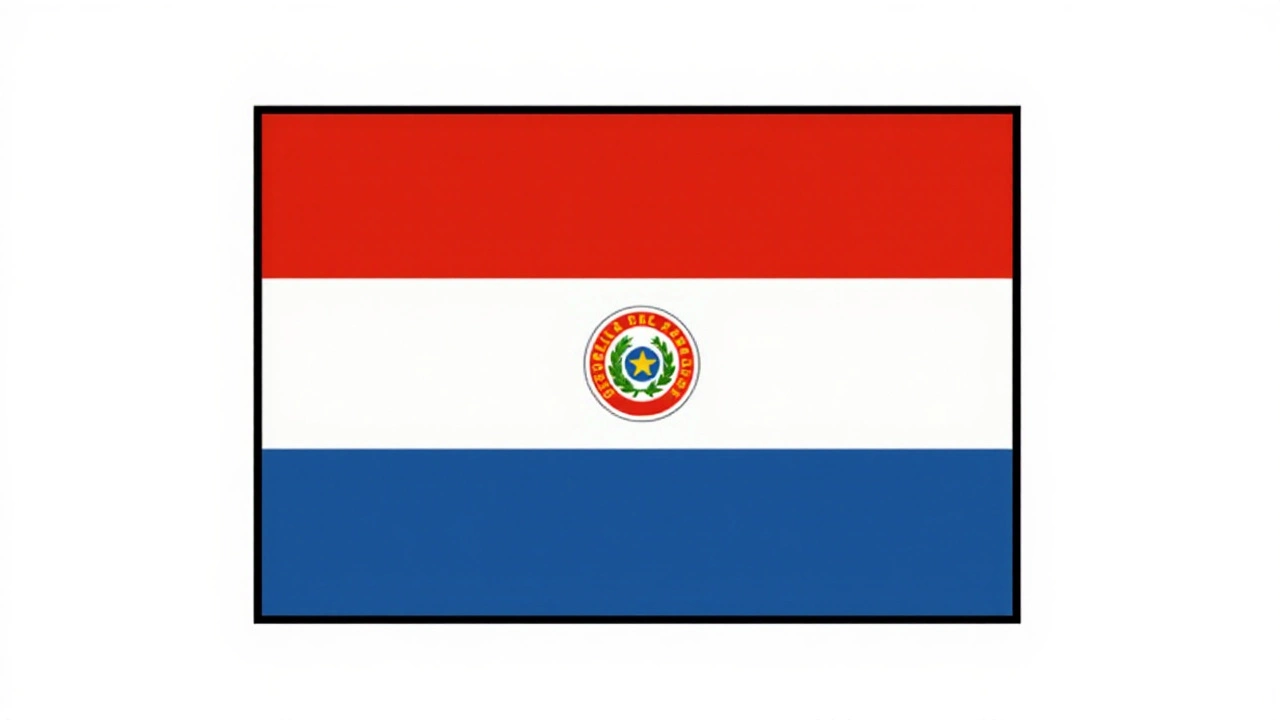Colombia just joined Brazil, Mexico, Chile, and Paraguay in one of the most dramatic tourism turnarounds in modern history — and the numbers don’t lie. In 2025, Colombia welcomed an estimated 6.7 million international visitors, according to Travel and Tour World, pushing it into the region’s elite tourism tier. That’s not just growth — it’s a full-throttle renaissance. While Mexico still leads the pack with over 9.55 million visitors in the first half of the year, the real story is how fast the rest of Latin America is catching up — and how deeply it’s changing the region’s economy, culture, and global image.
The Numbers Behind the Boom
It’s not just Colombia. Brazil saw more than 7 million tourists in the first three quarters of 2025 — a 45% jump from 2024, as reported by Visit Latin America. Chile recorded a 32% surge in arrivals during the same period, thanks to new flight routes to Patagonia and the Atacama Desert. And then there’s Paraguay, the quiet underdog: its international arrivals jumped 53% in Q1 2025 compared to the same quarter last year. That’s not a blip — it’s a breakout.
The region as a whole received 124.3 million tourists in 2024 — up 7.6% from 2023 — with tourism receipts hitting $128.4 billion, according to Latinvex’s analysis of UN Tourism data. Mexico alone accounted for nearly 36% of all arrivals, making it the sixth-largest tourism market globally, ahead of Germany and Japan. Meanwhile, Chile saw a jaw-dropping 40.4% increase in 2024, bringing in 5.2 million visitors and $3.2 billion in revenue. Peru wasn’t far behind, with arrivals up 29% and receipts climbing 30.4%.
Why Colombia? It’s More Than Beaches and Coffee
Colombia’s rise didn’t happen by accident. After decades of being overshadowed by its neighbors’ safety concerns, the country has reinvented itself — and the world is noticing. The historic cobblestones of Cartagena still draw crowds, but now they’re joined by digital nomads working from cafés in Medellín, where the city’s transformation from cartel capital to innovation hub is on full display. The Coffee Region is now a UNESCO-approved cultural experience, not just a scenic detour.
The government didn’t just sit back. It poured money into infrastructure: new luxury resorts opened in Cartagena this spring, and direct flights from Paris, Madrid, and Toronto to Bogotá and Medellín began rolling out in early 2025. Its "Cultural Tourism" campaign invited travelers to cook with local families, learn Afro-Colombian drumming, and walk ancient trails with indigenous guides. And it worked. While Visit Latin America reported 3.1 million visitors from January to August 2025, Travel and Tour World put the first-half total at 4.5 million — suggesting full-year numbers could hit 7 million. That’s a 12%+ increase from 2024.
The Sustainability Edge
This boom isn’t just about volume — it’s about values. Chile has been named South America’s Best Green Destination at the World Travel Awards for three years running, thanks to its National Sustainable Tourism Strategy 2035, which ties eco-certification to tax incentives for hotels and tour operators. Brazil, too, has embedded sustainability into its national tourism policy, with protected areas now offering guided, low-impact tours that fund conservation.
Even smaller players are stepping up. El Salvador — once overlooked — saw an 81% tourism surge by betting big on surfing, volcano hiking, and Instagram-friendly eco-lodges. Its digital marketing team, largely run by local influencers, outspent larger nations with clever, authentic content. Meanwhile, the English-speaking Caribbean, which lost market share during pandemic quarantines, clawed back its position by targeting European and South American travelers with all-inclusive resorts and direct flights from London and São Paulo.

Who’s Really Winning?
It’s not just the big names. Paraguay and Puerto Rico led in booking growth — up 9% and 7% year-over-year — according to Amadeus’s 2025 Travel Insights report. That’s significant because neither is traditionally a top destination. But travelers are looking for authenticity, affordability, and fewer crowds. Paraguay’s Jesuit ruins, the Pantanal wetlands, and its $8 steak dinners are drawing curious tourists from Argentina and beyond.
Hotel occupancy rates across Latin America stayed above 75% in the first half of 2025. Mexico and Colombia offered the most competitive rates, with average daily rates under $140 — far below Miami or Barcelona. That’s a huge draw for budget-conscious Europeans and North Americans looking for value without sacrificing experience.
What Comes Next?
The momentum isn’t slowing. AmericasMI forecasts Paraguay will grow at 5% annually in tourism revenue over the next two years, fueled by foreign investment in green hydrogen and pulp production — sectors that are bringing new infrastructure and international workers who stay to explore. Colombia plans to open two more international airports by 2026. Chile is expanding its Patagonian rail network. Brazil is preparing for the 2027 FIFA Women’s World Cup, with new stadiums and transit lines already under construction.
What’s clear: Latin America is no longer just a getaway. It’s becoming a destination of choice — for culture, for nature, for affordability, and for genuine human connection. The pandemic forced the region to rethink tourism. Now, it’s leading the world in how to do it right.
Frequently Asked Questions
Why is Colombia suddenly so popular among tourists?
Colombia’s surge is due to targeted government investment in infrastructure, safety improvements, and a global marketing push around its cultural offerings — from Medellín’s innovation scene to Cartagena’s historic charm. New direct flights from Europe and North America, plus affordable luxury stays under $140/night, made it accessible. The "Cultural Tourism" initiative, which connects visitors with local communities, created authentic experiences that social media amplified.
How does Colombia’s tourism growth compare to Mexico’s?
Mexico still leads with over 9.55 million visitors in the first half of 2025, but Colombia is growing faster — projected at 12%+ for the full year. Mexico’s strength lies in its scale and established beach resorts, while Colombia’s appeal is in diversity: mountains, cities, coffee farms, and Afro-Caribbean culture. Colombia is catching up in revenue, too, with hotel ADRs lower than Mexico’s, attracting more budget-conscious travelers.
What role did sustainability play in this tourism boom?
Sustainability became a key differentiator. Chile’s National Sustainable Tourism Strategy 2035 tied eco-certification to tax breaks, while Brazil embedded environmental protections into its tourism policy. Hotels in Patagonia and the Amazon now offer carbon-offset tours. Travelers increasingly choose destinations that protect nature — and Latin America’s governments responded by making sustainability a selling point, not just a buzzword.
Why is Paraguay growing so fast despite being less known?
Travelers are seeking off-the-beaten-path experiences, and Paraguay delivers: Jesuit ruins, vast wetlands, and low-cost accommodations. Its 53% Q1 2025 surge reflects a global trend toward undiscovered destinations. With improved roads, new boutique lodges, and word-of-mouth marketing on platforms like TikTok, Paraguay is becoming the "secret gem" of South America — attracting Argentinians, Brazilians, and even Europeans looking for authenticity over crowds.
Is this tourism boom sustainable long-term?
Yes — but only if infrastructure keeps pace. Colombia, Chile, and Brazil are investing in airports, green hotels, and waste management. The real test is whether local communities benefit. So far, cultural tourism models in Colombia and El Salvador ensure income flows to artisans and guides, not just international chains. With continued policy focus and community involvement, this boom could become a model for responsible global tourism.
What’s the biggest threat to this growth?
Over-tourism in hotspots like Cartagena and the Galápagos could strain resources if unmanaged. Also, political instability in any major country — say, if Brazil’s elections lead to policy shifts — could spook investors. And while safety has improved, lingering perceptions of risk in parts of Colombia or Mexico could slow growth. The region’s success depends on consistent governance, environmental safeguards, and authentic local engagement — not just marketing.
